Yuan Jia-hsin, Lecturer Waseda University History Museum (fixed term)
"August 15th (Wednesday), clear skies. A morning worship ceremony was held at 6:00 AM. At 6:40 AM, an alert was issued in the Nagano region. Air raid warnings were then heard. An enemy formation was about to attack the Ina region..."
The morning worship ceremony was held at 6:00 AM. At 6:40 AM, an alert was issued for the Nagano region, followed by an air raid warning. This was due to enemy formations attacking the Ina region.
Eighty years ago, on August 15, 1945, the Waseda University student corps stationed at the Karuizawa base faced the day of Japan's defeat in this tense atmosphere. At the end of their journals, which detail their listening to the Emperor's radio broadcast, they wrote the following:
"...With the issuance of the Imperial Edict, the air and ground became completely quiet, and the sounds of enemy aircraft attacks could not be heard. The Imperial portrait was also preserved and handed over to the Emperor in perfect safety. Construction of the Hoanden Hall will be halted as of today."
As soon as the Imperial Rescript (Gyokuon-hoso) was issued, the sky and ground became completely silent, and the sounds of enemy aircraft could no longer be heard. The Imperial portrait was also in perfect safety. Construction of the Hoanden was halted as of that day.
They left Tokyo and traveled to Karuizawa, where the risk of air raids was relatively low due to the large number of foreign residents, to protect (respectfully guard) the photograph of Emperor Showa and Empress Kojun, or "Imperial Portrait," that had been bestowed upon the university. The "School Air Defense Guidelines," enacted in September 1943, stated that the protection of Imperial Portraits and copies of Imperial Rescripts, including the Imperial Rescript on Education, was a supreme mission that took priority over the protection of students and children in wartime school air defense. For this reason, after the summer of 1944, when air raids on major cities intensified, Imperial Portraits were evacuated one after another before the students, and the sacrifices of Faculty and students to protect these scraps of paper were retold as heroic tales.
However, unlike national schools, which were already bestowed with Imperial portraits and copies of the Imperial Rescript on Education during the Meiji period, private schools, which prided themselves on their liberal academic culture, were by nature distanced from this type of national education. However, after the Manchurian Incident of 1931, and particularly in the wake of the Emperor Organ Theory Incident of 1935 (*), a situation arose in which private higher education institutions were also forcibly given Imperial portraits (transferred from government offices to the private sector). At Waseda University, events to celebrate the three major anniversaries (Kigensei (National Foundation Day), Tencho (Emperor's Announcement Day), and Meiji (Meiji Day)) began to be held in 1936, and a copy of the Imperial Rescript on Education was presented in April of that year, followed by the Imperial portrait early the following year.
*An incident in which constitutional theory that regarded the state as a legal entity and the Emperor as its highest organ was attacked in the Imperial Diet as being contrary to the national polity. This incident prompted the government to once again emphasize that the right to govern the state belongs to the Emperor.
The Goshin'ei and Imperial Rescripts of the Imperial Rescripts of Education were stored in a custom-built mortuary and enshrined in a "mortuary" located in the Director's Office on the second floor of the Onnai Memorial Hall (near the current Waseda Campus 7 Building No.). Next to it was Office of the President, and President was the chief administrator of the Goshin'ei. The "Regulations for the Protection of the Goshin'ei" established at that time also stipulated the place to which the Goshin'ei was to be moved in case of emergency, and in consideration of wind direction during air raids, Okuma Kaikan and the Theatre Museum were designated as two evacuation sites.
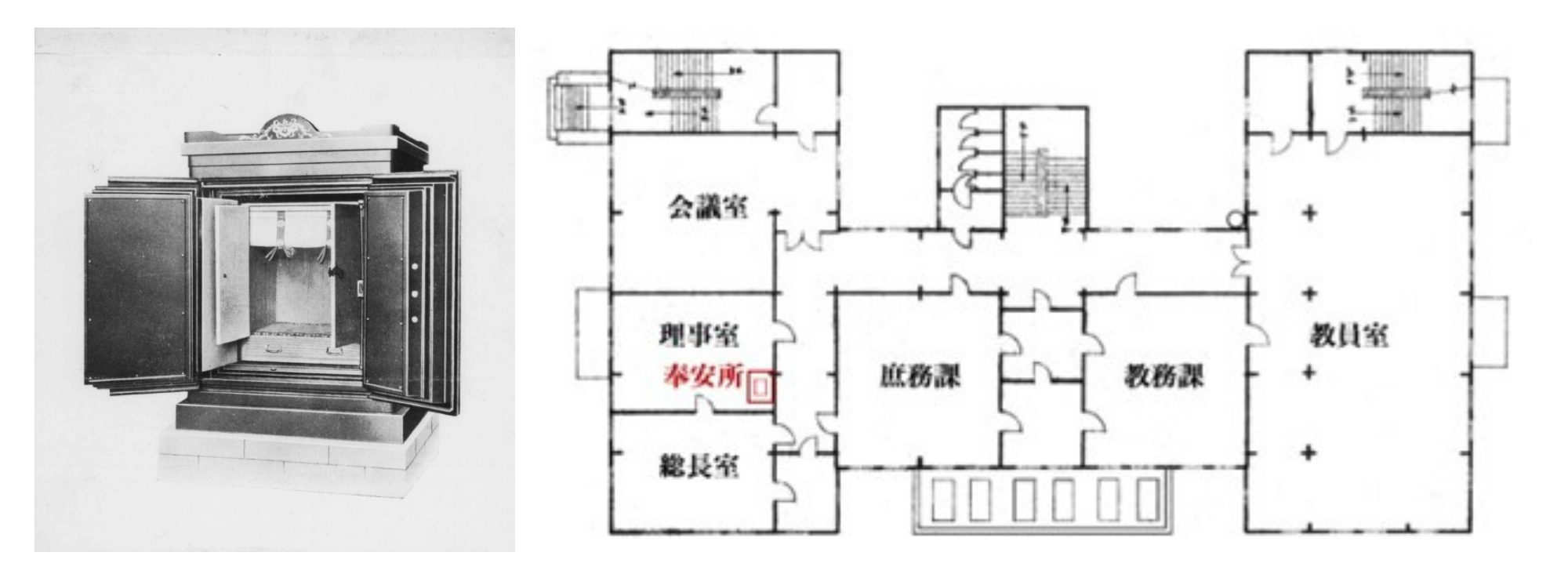
Left: Hoanko (external dimensions: width 97cm x depth 74cm x height 124cm). Source: "Waseda University Headquarters Documents (continued 2)" 066
Photo on the right: Floor plan of the second floor of the Onshi Memorial Hall (based on "Waseda University Headquarters Documents (Continued 2)" 066)
In fact, in the air raid on the night of May 25, 1945, which burned one-third of Waseda Campus and reduced the grounds of Okuma Kaikan as well as the school sites in Toyama and Kikui-cho to ashes, it was Tomio Nakano President who dedicated the Goshinmei. With the help of Yasanji Nakamura Professor, who was sleeping in the laboratory of School of Law, and Mr. Ikeda, a staff member, Nakano President carried the imperial tablet and a copy of the imperial edict in his backpack to the Mejiro Police Station, where the chief and other police officers paid their respects and placed them on the altar in the station. This saga of heroism became known in retrospect by the officers concerned after the war.
Subsequently, consideration was given to the evacuation of the Imperial portrait and Imperial Rescript, along with the university's books and materials. At 3:00 p.m. on July 16 of the same year, a guarding force consisting of one second-year student and ten first-year students (four of whom were absent due to returning home), led by Professor Nakamura Yazoji, set out for Karuizawa Base (the baseball club's former training camp). Instead of using the train, the group crossed Usui Pass in a special memorial vehicle, finally arriving at their destination just after midnight and placing the Imperial portrait in a temporary shrine.
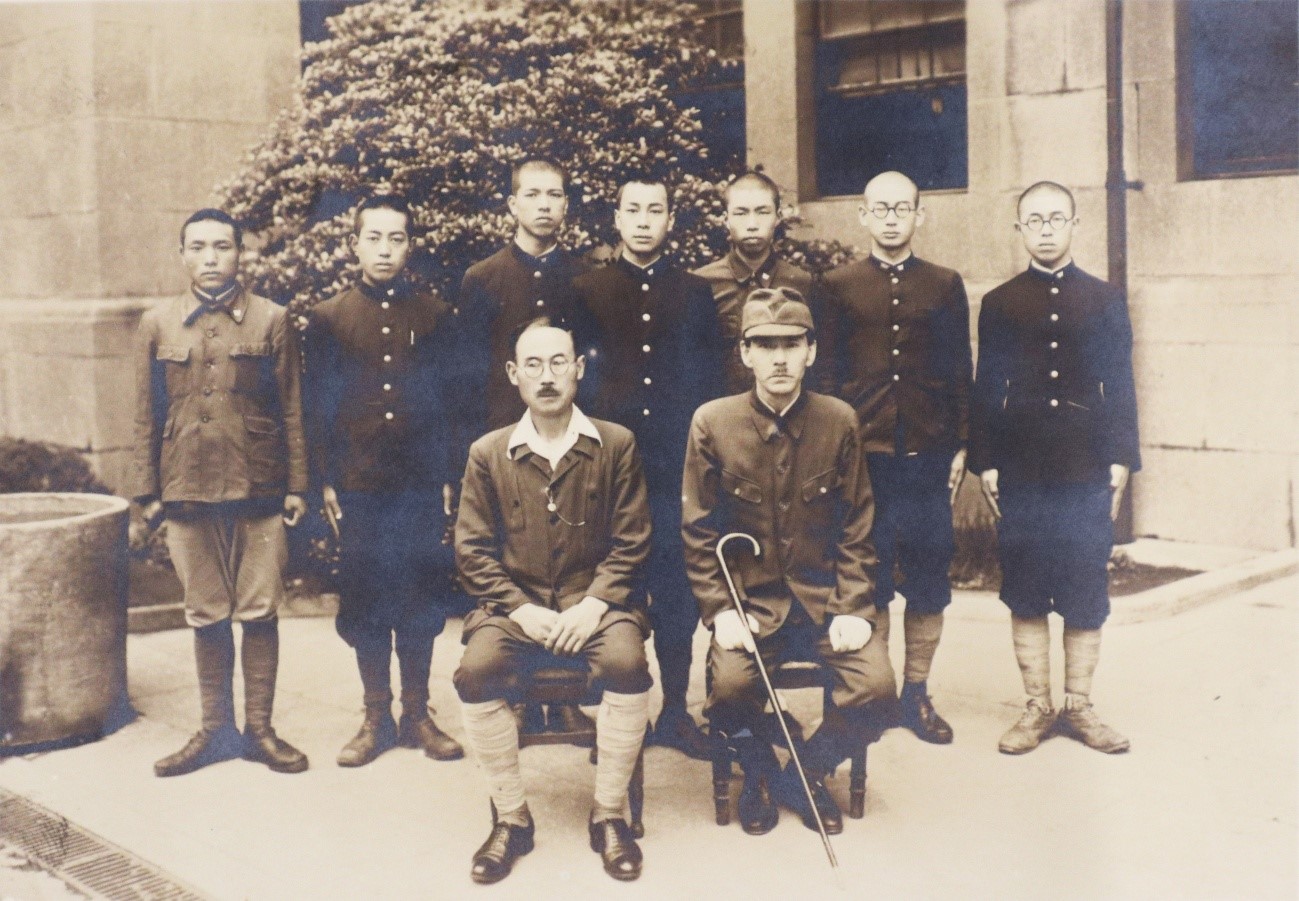
Photograph of President Tomio Nakano (front row, right) and the guardian delegation ("Former Collection of Building No. 3" 36-20)
The events that followed are recorded in a book titled "Protection Journal." A morning worship ceremony for the portrait was held around 6:00 AM each day, and on the 18th, a groundbreaking ceremony was held for the construction of the official Hoanden. While helping with the construction of the Hoanden, some members performed anti-aircraft surveillance whenever air raid warnings were issued, while others "were directly tasked with protecting the portrait in front of the Emperor." Sunday, July 29th, was the first public holiday granted to the members. At the request of the Marquis Okuma family, who had a villa in Karuizawa, four members were called upon to help build air raid shelters and plant buckwheat. Other duties included cleaning roads to welcome the Empress Dowager's evacuation and volunteer labor at the request of the naval forces.
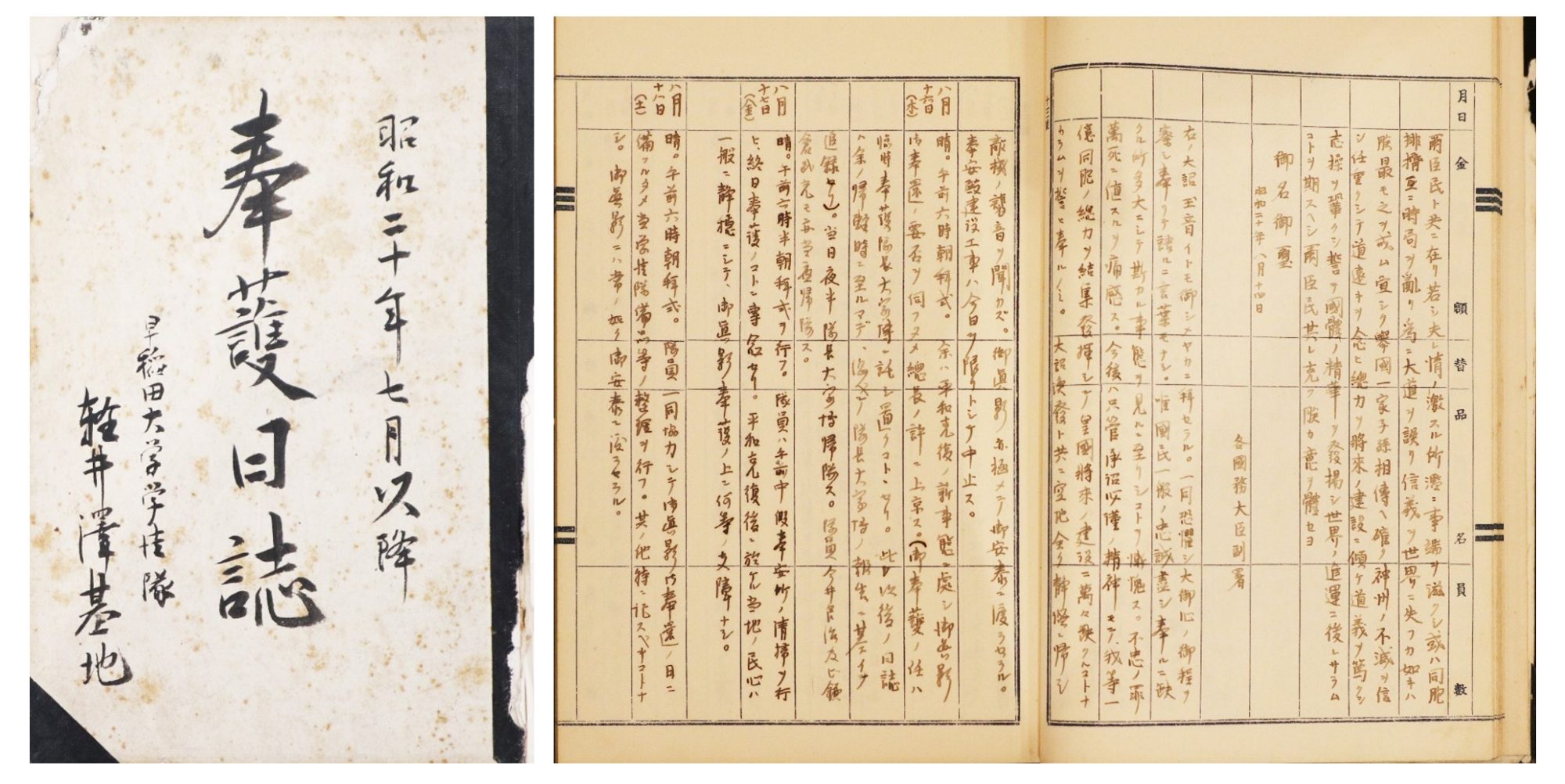
Cover of the "Diary of Protection" (left) and the entry for August 15 (right, "Former Collection of Building No. 3" 36-20)
Members were given a monthly allowance of 60 yen as compensation, of which 35 yen was deducted for dormitory fees. According to the recollections of member Kasahara, the meals provided in the dormitory were far from enough to fill one's stomach, and for the members, cultivating land was the most important daily routine. However, increasing food production did not produce immediate results, and many members fell ill during the harsh life of serving the deceased during the war.
Even after the Emperor's surrender broadcast on August 15, they continued to guard the portrait as usual, never failing to perform their daily morning prayers. Until it returned safely to the university headquarters at 5:10 pm on September 8, they made sure to add phrases such as "The portrait has been handed over in perfect safety," "There is nothing unusual about the portrait," and "There is nothing unusual about the portrait" to their daily records. These repeated words remain quietly alive in the university's records even today, 80 years later, as an important testimony symbolizing the madness of wartime.
[References]
Toshio Kasahara, "The Story of the Imperial Portrait Protection Corps" (Waseda Gakuho, Vol. 884, 1978)
Miyoji Ikeda, "President Tomio Nakano before and after the end of the war" (Waseda University Historical Summary 15, 1982)
Sato Nomaru, "The Imperial Portrait and the Imperial Rescript on Education at Universities" (Historical Review 478, 1990)
Yoshizo Kubo, "New Edition: Showa Educational History: The Historical Development of the Emperor System and Education" (Toshindo, 2006)
Masaaki Ono, "Imperial Portraits and Schools: The Transformation of 'Protection'" (University of Tokyo Press, 2014)
Hirokazu Yoshie, "National Mobilization and the Imperial Portrait at the Ministry of Education," Japanese History 922, 2025
Yuan Jia-hsin / Lecturer Waseda University History Museum (fixed-term)
He completed his doctoral studies at the Graduate Graduate School of Letters, Arts and Sciences Waseda University. He holds a PhD in Literature. He specializes in modern Japanese self-government systems, local administration, and national award systems. His representative works include "Prefectural Government 'Conferences' in the Early Meiji Period" (Shigaku Zasshi, 129-2, 2020) and "Medal Ordinances and the Formation of 'Reputation' in Local Communities" (Historia, 295, 2022).

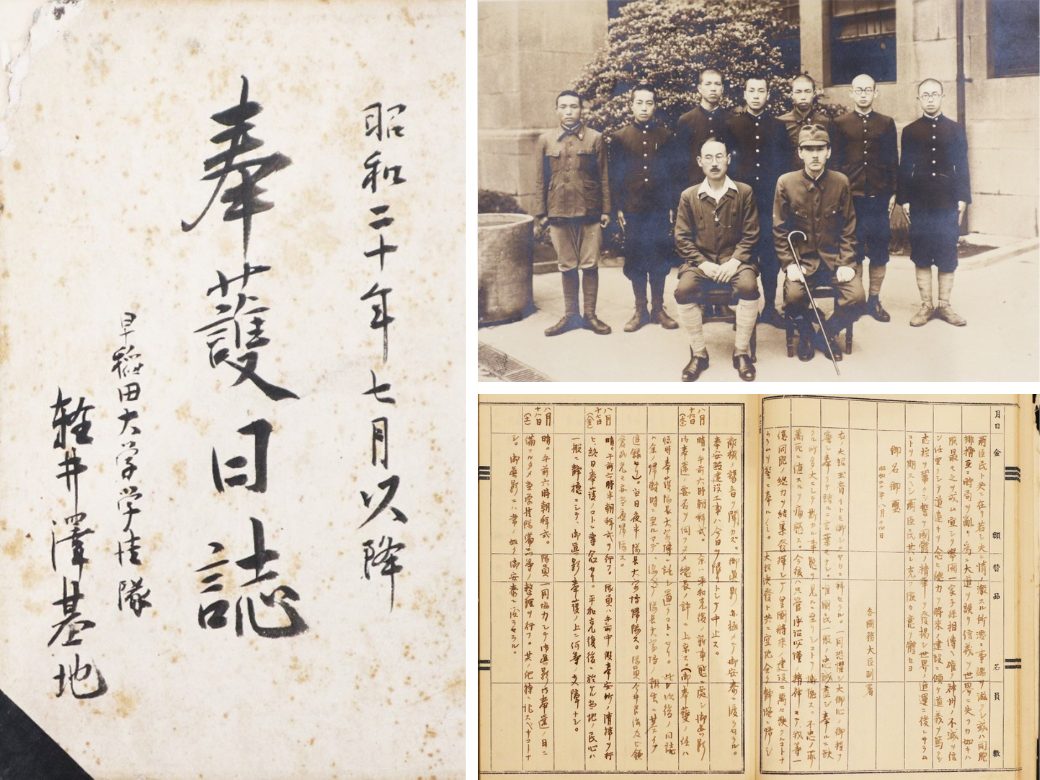
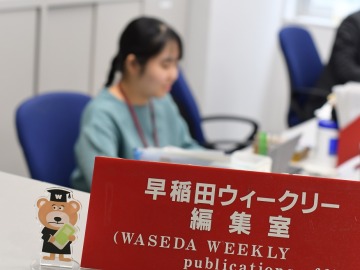



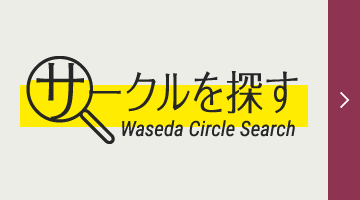
![[Save version] Map of the four main campuses](https://www.waseda.jp/inst/weekly/assets/uploads/2025/09/17cb2975123fc5103172ef60bd98608d-610x458.jpg)

